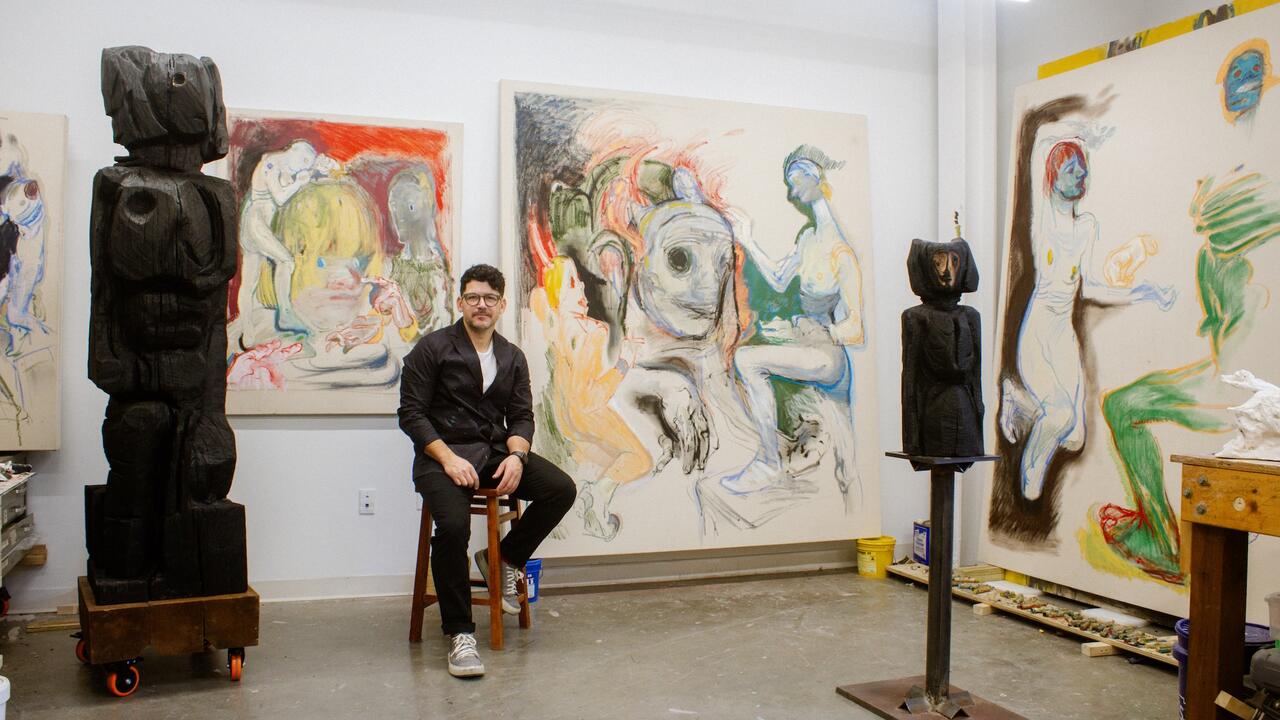Do Museum Wall Labels Hide Artists’ Misogyny? Gauguin and Picasso Protested at Met
Artist Michelle Hartney has created #MeToo-inspired wall labels to call out the abusive actions of art history’s icons
Artist Michelle Hartney has created #MeToo-inspired wall labels to call out the abusive actions of art history’s icons

On the evening of Saturday 3 November 2018, New York’s Metropolitan Museum of Art became the site of a guerilla performance project, zoning in on the abusive behaviour of the male artists that line its walls. Artist Michelle Hartney’s Performance/Call to Action (2018) subverted displays of artists such as Balthus, Paul Gauguin and Pablo Picasso, by applying her own series of wall plaques across the galleries to highlight their misogyny. While Hartney stressed that she is not advocating censorship of artworks, she argues that museums must do more to educate the public about the darker side of the artists that they venerate. The museum removed Hartney’s texts when they were discovered by staff.
Hartney produced her own wall texts to accompany paintings by Gauguin, who infamously took several indigenous teenage girls as his wives on moving to the South Pacific islands of Tahiti and Hiva Oa in the 1890s. Gauguin’s native brides were aged just 13, 14 and 14 – he infected them and other locals with syphilis. To accompany Gauguin’s work Two Tahitian Women (1899), depicting two topless figures, the museum’s text describes the artist’s focus ‘on the beauty and serene virtues of the native women.’ In Hartney’s intervention, she posted up a label quoting from Roxane Gay’s article ‘Can I Enjoy the Art but Denounce the Artist?’ (2018), in which the latter wrote: ‘We can no longer worship at the altar of creative genius while ignoring the price all too often paid for that genius.’

Hartney’s intervention at the Met also drew attention to allegations of misogyny and abusive behaviour towards women by Picasso. While in his 40s, the artist had an affair with Marie-Thérèse Walter, whom he met when she was just 17. Alongside Picasso’s The Dreamer (1932), which takes Walter as its subject, Hartney added a piece of text quoting from comedian Hannah Gadsby’s Netflix show Nanette (2018), which drew critical acclaim this year for its fusion of social commentary, memoir and art history.
In Nanette, Gadsby argues: ‘The history of Western art is just the history of men painting women like they’re flesh vases for their dick flowers.’ Considering Picasso’s comment that ‘Each time I leave a woman, I should burn her. Destroy the woman, you destroy the past she represents,’ Gadsby concludes that the artist ‘suffered the mental illness of misogyny.’
Hartney created a similar performance earlier in the year in which she applied her own wall texts to Balthus’s Girl With Cat (1937), on display at the School of the Art Institute of Chicago. Titled Correcting Art History: How Many Crotch Shots of a Little Girl Does It Take to Make a Painting? (2018), she called out the artist’s ‘lifelong obsession with young girls.’

The #MeToo era has pushed renewed scrutiny within the art world around issues of display, and the power of museum’s wall labels to either conceal or acknowledge artists’s sexual misconduct. Art collective The Guerilla Girls recently created wall labels imagining what a proper response from museums might look like, reacting to allegations of sexual harassment against the artist Chuck Close. ‘The art world tolerates abuse because it believes art is above it all,’ the collective’s labels read, ‘and rules don’t apply to ‘genius’ white male artists.’
Some museums have begun to actively revise their captioning to highlight problematic histories, in light of current concerns. In June, the Worcester Art Museum in Massachusetts added new labels to paintings contained within its early American portraits gallery, to identify figures from history who had profited from the slave trade. ‘These paintings depict the sitters as they wish to be seen […] Yet a great deal of information is effaced in these works, including the sitters’ reliance on chattel slavery,’ the museum’s new introductory label states.




















